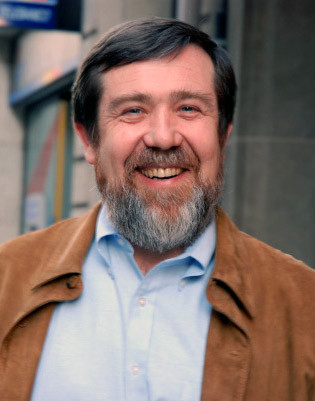Tetris Turns 30: Five Facts About the Iconic Videogame

For the last 30 years we have been cursing at computer screens of various sizes as we put the wrong N-shaped shape into wrong hole.
But despite the frustration that iconic video game Tetris creates, it has endured to become one of the most widely played and instantly recognisable videogames ever.
In the last 30 years the game has become a mainstay on list of the most important videogames of all time, and to celebrate it reaching this milestone, we look at five facts you may not know about the brick-building game.
1. Tetris emerged from the Cold War-era Soviet Union

Hardly what you would call a hotbed of innovation, Tetris emerged from 1984-era USSR, which at the time was in the middle of what has become known as the second Cold War as tensions grew between it and the United States.
In 1984, Alexey Pajitnov, a computer programmer was working for the Dorodnitsyn Computing Centre of the Soviet Academy of Sciences, a Soviet government-founded R&D centre.
Bored of his work, Pajitnov loved playing with puzzles and one puzzle he loved was pemtominoes, which involved arranging shapes in a box shape and keeping it gap-free.
Using a Russian computer called the Electronica 60 - which was used only at the facility where he worked - Pajitnov created his own electronic version of the game.
Sharing the code with friends, Pajitnov's creation was soon ported to an IBM PC and the game spread like wildfire across Moscow and beyond in the Soviet Union.
2. Media mogul Robert Maxwell once tried to petition Mikhail Gorbachev for the rights to Tetris
Because Pajitnov was working for the Soviet government when he created Tetris, the rights to the game automatically went to the state.
The state, seeing the potential to capitalise on the growing popularity of the game, distributed the rights from an organisation called Eletronorgtechnica, or Elorg.

What followed however was a nightmare tangle of licences and sub-licences sold by companies which had no right to sell them, which resulted in many companies - including Nintendo - selling versions of the game they had no right to sell.
The result was that after visiting Elorg in Moscow, Nintendo was sold the console and handheld rights to the game and used these to full effect with the release of the Game Boy version of Tetris.
This did not go down well with Kevin Maxwell, who owned Mirrorsoft, a US company who offered more money but were refused rights to make and distribute the game.
So young Kevin turned to his media mogul father, Robert, who decided a direct approach was needed and using his clout arranged a meeting with then Soviet ruler Mikhail Gorbachev to try and persuade him to give the rights for Tetris to his son.
However fate conspired against the Maxwells, as on the date of the meeting, Russia was hit by an earthquake and despite Gorbachev telling Maxwell, that he "should no longer worry about the Japanese company [Nintendo]" Mirrorsoft never got its hands on the rights to Tetris.
3. Where did all the Tetris money go?
It certainly didn't go to Pajitnov. He made no money from his creation until 1996, long after the game's heyday.
The Soviet government made a significant slice of revenue from selling the rights through Elorg to Nintendo and others, but how much exactly is unknown.
Others who sold the rights to the game when they didn't really have the right to do so, also made some money, but the big winners from Tetris was Nintendo.

It is impossible to quantify exactly how much money Nintendo made from Tetris, as the game was bundled with most units of the handheld console the Japanese giant sold.
However, over 30 million versions of the Game Boy cartridge were produced, and it gave the console the hook it needed to become a huge success.
As for Pajitnov he is now receiving the royalties from Tetris, having set up The Tetris Company in 1996. Pajitnov also worked for Microsoft from then until 2005.
4. The name is a combination of Tetra and Tennis
Pajitnov loved puzzles and he loved tennis.
Therefore considering his game featured tetrominos (a geometric shape composed of four squares), the logical name was Tetris - simple.
5. The famous Tetris theme tune is based on a 19th century Russian folk song
It is instantly recognisable as the theme tune for the iconic video game, but that "doo do do doo, do do do, do do do..." music is not just some tune Pajitnov made up on the spot.
The origin for the catchy tune is a Russian folk tune called "Korobeiniki" that tells of a meeting between a peddler and a girl, in which they haggle over the price of goods in a veiled metaphor for courtship.
The song was first associated with the game when arrangements first appeared in Spectrum Holobyte's Apple IIgs and Mac versions of Tetris. The song was re-arranged in 1989 by Hirokazu Tanaka as the "Type A" accompaniment in Nintendo's Game Boy version - and from then on it has been forever linked to the game.
© Copyright IBTimes 2025. All rights reserved.


















